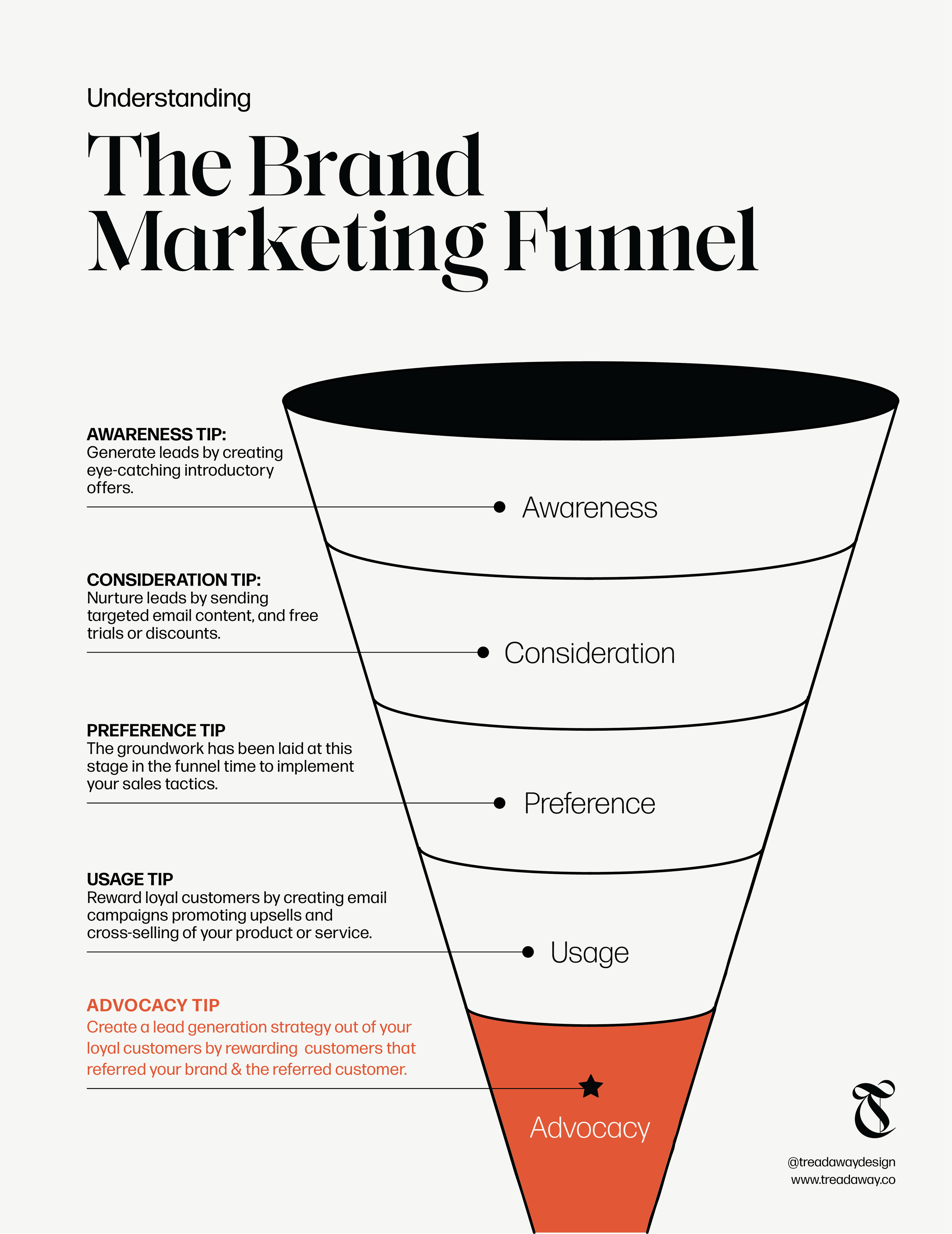The Brand Marketing Funnel and How to Use it to Grow
Growing your brand and increasing sales is the primary goal of almost every entrepreneur or small business owner. However, getting there takes effort, strategy, and dedication. In today’s world, we are inundated by strategies and tactics that claim to help us streamline that process and take most of the guessing game away.
The top way to move beyond an educated guess is by understanding our target audience and helping to guide them through a specific brand marketing funnel that will support sales and customer loyalty.
What is a brand marketing funnel?
Brand marketing funnels are key to any good marketing strategy. A brand funnel is a conceptual model used to show the relationship between customers and a brand at different stages of the customer journey toward sales and brand loyalty. The funnel details these stages as they relate to your product and sales process and helps you to guide customers through the brand experience.
Understanding the marketing funnel is vital to your brand’s success.
Brands should understand the details of their own specific marketing funnels as it’s one of the best tools for measuring the health of your brand and pinpointing areas a potential customer might get ‘stuck.’ A strong marketing funnel outlines your customers’ brand experience journey by measuring awareness, consideration, preference, usage, and advocacy. It’s important to understand how good of a job you’re doing at moving customers from one stage of the funnel to the next, ultimately working toward loyalty and advocacy.
Segments of the Brand Marketing Funnel
Consumers take steps in the decision-making process. They generally don’t just buy something the instant they think about it or may not know they even want what you are offering. Although the terminology may change slightly based on the source, they all articulate a similar message. Here are the segments that make up the marketing brand funnel:
Awareness Stage
This stage is very broad. It consists of everyone who has seen any advertising of your brand and has a general awareness of your company and product.
Action
Generate leads by creating eye-catching introductory offers.
Make a ‘big claim’ and state it loudly on your platforms to capture attention.
Consideration Stage
At this point, people who are aware of your brand and would consider using it are vetting your offer against the other offers in the market. This is the moment you want to convert your leads into prospective customers.
Action
Nurture leads by sending automated email campaigns, targeted content, and free trials or discounts.
Capitalize on their decision-making process by outlining your own competitive landscape comparisons and show where your offer outshines the others.
Preference Stage
The groundwork has been laid at this stage in the funnel, and the prospective customer now knows enough about your product or service they understand that you can offer a solution to their problem. At this point, they are ready to decide and, hopefully, choose your brand over the competition.
Action
Refine your sales process to reduce friction and create ease.
Reassure your customer of the benefits throughout the sales cycle, including post-purchase communications.
Usage Stage
This part of the brand funnel is essential. Just because you’ve made a sale, it’s still crucial that you follow up and continue to nurture this segment of customers who are currently using your brand. This will help keep them loyal to your brand and offer even when compelling newcomers enter the market.
Action
Maximize your ROI by rewarding customers for their loyalty.
Create automated email campaigns specifically targeting those who have already purchased from you.
Promote upsells and cross-selling of your offers to add value continually.
Advocacy Stage
All of your hard work has come to fruition at this stage. The people in this stage of the funnel are those who would recommend your brand. Keep these happy customers happy; they will refer you to others for your product or service, making overcoming sales objections easier.
Action
Create a referral generation program for your loyal customers.
So, what does a marketing funnel do for you?
You can assess how your brand is doing just by looking at the movement through your funnel and, from there, create a marketing strategy to target the pinch points in your funnel to create more balance and movement through each stage. The funnel can also:
Help assess your brand health.
Determine where you might be missing your audience.
Identify what changes you can make to fix engagement at all stages.
Understanding the customer’s buying journey.
One of the most significant benefits of using a brand funnel is tracking your engagement through each stage and identifying where you might be losing customers or not capitalizing on an opportunity. This quick identification can help take the guessing game out of where you apply marketing and advertising dollars.


